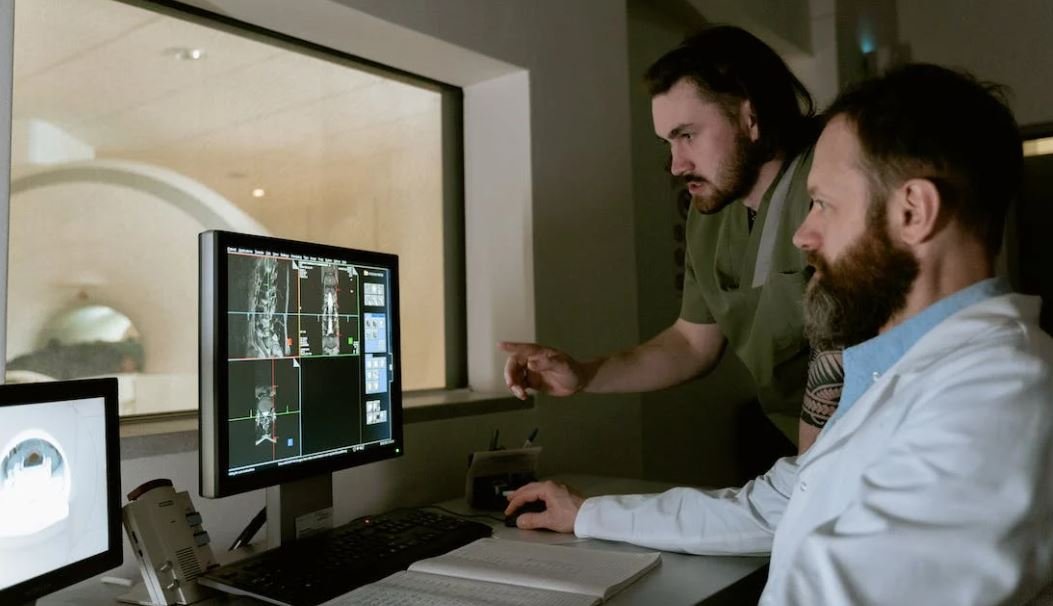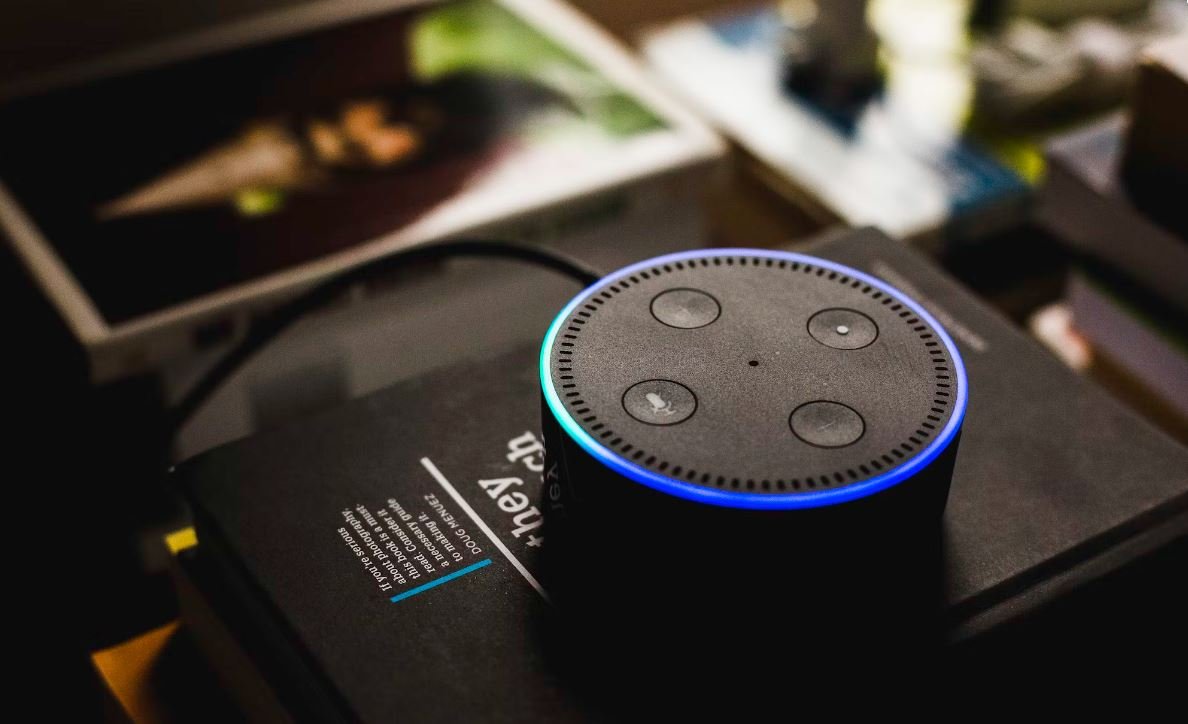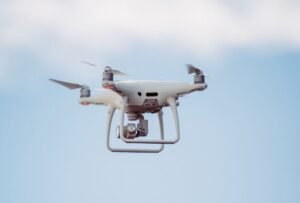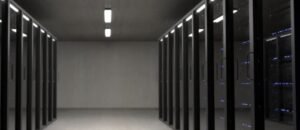AI Image Illusion
In the age of artificial intelligence (AI), our digital experiences are becoming increasingly sophisticated and realistic. One fascinating application of AI is the creation of image illusions that can deceive our perception and challenge our understanding of reality. By leveraging deep learning algorithms, AI can manipulate images in such a way that they appear completely different to the human eye. In this article, we will explore the capabilities of AI image illusions and their potential implications.
Key Takeaways:
- AI image illusions use deep learning algorithms to manipulate images.
- These illusions can deceive our perception and challenge our understanding of reality.
- AI image illusions have both positive and negative implications.
The Science Behind AI Image Illusions
AI image illusions rely on the power of deep learning algorithms to analyze and manipulate visual data. These algorithms are trained on vast amounts of image data, allowing them to learn patterns, features, and associations. By understanding the underlying structure and components of images, AI algorithms can modify them in subtle and creative ways, resulting in images that deceive our perception.
*Did you know that AI image illusions are inspired by optical illusions that have perplexed humans for centuries?*
Positive Implications
AI image illusions have several positive implications. They can be used in the fields of art and design to create captivating and unique visual experiences. Artists and designers can leverage AI algorithms to generate new forms of art, exploring the boundaries of human creativity. Additionally, AI image illusions can be used in educational settings to teach concepts of perception, cognition, and visual processing.
- AI image illusions foster creativity and innovation in art and design.
- They can be used as educational tools to teach visual perception concepts.
Negative Implications
While AI image illusions have tremendous potential, they also raise concerns. One major concern is the potential for misuse and deception. AI algorithms can be used to create manipulated images that could be used for unethical purposes, such as spreading misinformation or manipulating public opinion. Additionally, there are worries about the impact of AI image illusions on our mental well-being, as they can induce confusion and challenge our trust in the authenticity of visual information.
*It is fascinating to ponder how AI image illusions might reshape our perception of reality in the digital age.*
Table 1: Examples of AI Image Illusions
Table displaying different examples of AI image illusions:
| Illusion Type | Description |
|---|---|
| Hallucinations | AI algorithms generate surreal and dream-like images that defy the laws of nature. |
| Style Transfer | AI algorithms apply artistic styles to ordinary images, mimicking famous artists’ works. |
| Face Swapping | AI algorithms replace faces in images, creating realistic and seamless swaps. |
Implications for the Future
As AI continues to evolve, we can expect more advanced and realistic image illusions. This opens up a world of possibilities but also necessitates careful consideration of the ethical implications. Striking a balance between creativity, innovation, and responsible use of AI image illusions will be crucial in shaping our digital future.
- AI image illusions will become even more sophisticated and realistic.
- Critical examination of the ethical implications is necessary to ensure responsible use of AI image illusions.
Table 2: Benefits and Concerns of AI Image Illusions
Table displaying the benefits and concerns associated with AI image illusions:
| Benefits | Concerns |
|---|---|
| Enhanced creativity and innovation in art and design. | Potential misuse for unethical purposes. |
| Opportunities for educational applications. | Impact on our perception of reality and trust in visual information. |
Countering the Illusions
While AI image illusions can be captivating and mind-boggling, it is essential to remain vigilant and critical. Through media literacy and education, we can develop the skills to discern between genuine and manipulated images. Moreover, ongoing research and advancements in AI technology can help develop tools to detect and analyze AI image illusions, providing us with valuable insights to tackle the challenges they present.
Table 3: Guidelines for Countering AI Image Illusions
Table outlining guidelines to counter the effects of AI image illusions:
| Countermeasures | Description |
|---|---|
| Media Literacy Education | Teaching critical thinking skills to evaluate the authenticity of images. |
| Advanced AI Algorithms | Developing tools to analyze and detect AI image illusions. |
In conclusion, AI image illusions provide us with an exciting glimpse into the power of AI and its impact on our perception and understanding of reality. While they offer numerous benefits in art, design, and education, it is crucial to navigate the ethical implications and address concerns in order to foster responsible and informed usage of this technology.

Common Misconceptions
AI and Image Illusion
When it comes to AI and image illusion, there are several common misconceptions that people often have. It is important to clarify these misconceptions to have a better understanding of the topic:
- AI can perfectly mimic human perception: One misconception is that AI can create images that are indistinguishable from real-life photographs. However, while AI has made significant advancements in generating realistic imagery, it is still far from replicating the complex nuances of human perception.
- AI can easily manipulate any image: Another misconception is that AI can effortlessly alter any image to create deceptive illusions. While AI algorithms can perform image editing tasks, generating convincing illusions may require extensive training and datasets specifically designed for this purpose.
- AI-generated illusions are always intentional: Some people believe that AI-generated illusions are always intentionally crafted to deceive. However, AI models used for generating illusions are often applied in various fields, such as art or entertainment, where the goal is to create visually captivating experiences rather than deceiving the audience.
Understanding these misconceptions is essential to have a more accurate perception of AI and image illusion. Let’s explore a few more misconceptions:
- AI-generated illusions are only for entertainment purposes: While AI-generated illusions can indeed be entertaining, they also have practical applications in fields like scientific visualization, architectural design, or medical imaging. This technology has the potential to enhance understanding and communication in various professional domains.
- AI can replace human creativity: There is a common belief that AI could replace human creativity in the realm of image illusion. However, AI is merely a tool that assists artists and designers in realizing their creative visions. It can aid in generating ideas or providing inspiration, but it cannot replace the unique human touch.
- AI-generated illusions are always generated with malicious intent: Contrary to popular belief, AI-generated illusions are not always created to deceive or manipulate. They can be used to explore new possibilities, challenge perspectives, or spark imagination. More often than not, the intention behind creating and sharing these illusions is to inspire awe and curiosity.
By dispelling these misconceptions, it becomes clear that AI and image illusion hold immense potential while also respecting the limitations of the technology. It is crucial to approach this topic with a balanced understanding to fully appreciate the role of AI in creating captivating visual experiences.

Introduction
AI Image Illusion is a fascinating field that merges artificial intelligence and image manipulation techniques to create mind-boggling illusions. In this article, we explore ten intriguing examples of AI image illusions, showcasing the remarkable capabilities of this technology. Each table provides information and interesting facts related to a particular AI image illusion.
Table 1: The Metamorphosing Portrait
This table displays the mesmerizing transformation of a portrait from one individual to another. Through AI algorithms, the image slowly morphs over time, smoothly transitioning from one face to the other, leaving viewers astounded.
Table 2: Vanishing Objects
In this table, we observe how AI is utilized to make objects disappear seamlessly from an image. From a lamp vanishing into thin air to a car magically disappearing, these image illusions defy logic and push the boundaries of our perception.
Table 3: Impossible Motion
Witnessing impossible motion is a hallmark of AI image illusions. This table presents animated images where objects seem to move in impossible ways, defying physics and creating an illusion of perpetual motion.
Table 4: Hidden Messages
AI image illusions can hide secret messages within an image. This table showcases images that, upon closer inspection or with the use of AI tools, reveal hidden letters, numbers, or symbols that were embedded during the creation process.
Table 5: Shape Deformation
Using AI algorithms, images can be distorted to create astonishing deformations that appear defying reality. This table exhibits various images where objects or faces are contorted and stretched in mind-bending ways.
Table 6: Gravity-Defying Structures
In this table, we explore how AI image illusions can manipulate architectural structures, making them appear physically impossible. Buildings appear to defy the laws of gravity as they twist, bend, and float in mid-air.
Table 7: Contextual Inversions
Through AI, images can be inverted contextually, flipping our perception of reality. The table showcases images where what seems to be the background has been transformed into the foreground and vice versa, creating a surreal experience.
Table 8: Hyperrealistic Art
This table presents AI-generated images that are indistinguishable from reality. These hyperrealistic artworks showcase the incredible capabilities of AI in mimicking textures, lighting, and details to create stunningly convincing images.
Table 9: Hybrid Creatures
AI image illusions can combine different elements from multiple images, resulting in hybrid creatures that blur the boundary between reality and fantasy. This table displays mind-bending combinations of animals, objects, and human features.
Table 10: Time-Traveling Landscapes
In this table, we explore AI image illusions that transport us through time. Photographs of historical landscapes are given a futuristic twist, merging the past and present to create captivating visions of what could have been.
Conclusion
The world of AI image illusions is a realm of wonder, where reality is bent, twisted, and defied. These ten tables have provided a glimpse into the astonishing possibilities when artificial intelligence and image manipulation converge. From metamorphosing portraits to time-traveling landscapes, AI continuously pushes the boundaries of what we perceive as real. These image illusions captivate our imagination and remind us of the endless creative potential of technology.
Frequently Asked Questions
What is an AI image illusion?
An AI image illusion refers to an image that is created or manipulated using artificial intelligence to create an optical illusion.
How are AI image illusions created?
AI image illusions are created using advanced algorithms and deep learning techniques. These algorithms analyze vast amounts of data and learn to generate images that can deceive human perception.
What are some examples of AI image illusions?
Some popular examples of AI image illusions include deepfakes, where AI is used to swap faces in videos, and style transfer, where AI is used to transform the artistic style of an image.
Are AI image illusions harmful?
AI image illusions can be both harmless and potentially harmful. While they can be entertaining and used for creative purposes, they can also be misused to spread misinformation or deceive people.
Can AI image illusions be detected?
Detecting AI image illusions can be challenging as the algorithms used to create them are becoming increasingly sophisticated. However, researchers are developing techniques and tools to detect and counter these illusions.
How can AI image illusions be used in various fields?
AI image illusions have applications in entertainment, art, advertising, and even medicine. They can be used to create visual effects, generate unique art styles, enhance advertisements, and aid in medical imaging analysis.
Are AI image illusions a form of AI-generated content?
Yes, AI image illusions are a form of AI-generated content as they are created using artificial intelligence algorithms.
What are the ethical concerns surrounding AI image illusions?
Ethical concerns regarding AI image illusions include the potential for manipulation, deception, privacy invasion, and exploitation. Ensuring responsible use of these technologies is essential.
Are AI image illusions limited to images only?
No, AI image illusions are not limited to images only. They can also be applied to videos and other forms of media to create realistic and convincing illusions.
Is it possible to create AI image illusions without coding knowledge?
Yes, there are user-friendly AI tools and software available that allow non-technical users to create AI image illusions without extensive coding knowledge.




